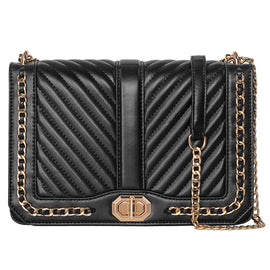What is Handbag Structure? A Complete Guide to Understanding Handbag Design
Handbags are more than just a fashion statement—they are a marriage of functionality, craftsmanship, and design. To truly appreciate a handbag, it’s essential to understand its structure. So, what is handbag structure? It refers to the intricate framework that gives a handbag its shape, durability, and utility. Whether you’re a handbag enthusiast, designer, or someone shopping for the perfect accessory, understanding handbag structure empowers you to make informed choices.
This guide delves deep into the components of handbag structure, shedding light on what makes a quality bag stand out.
The Key Components of Handbag Structure
Every handbag, from the simplest clutch to the most complex tote, is built with key components. Each part plays a role in the overall functionality, aesthetics, and durability of the bag.
1. The Body (Main Frame)
The body is the heart of any handbag. It defines the bag’s primary shape and determines its capacity.
- Rigid Frames: Found in structured bags like satchels and briefcases, rigid frames maintain the bag’s shape even when empty. Materials like metal or hard plastic are often used as internal reinforcements.
- Soft Frames: Seen in slouchy bags like hobos, soft frames offer flexibility and casual appeal. These bags rely on fabric and stitching rather than internal support.
Pro Tip: A high-quality handbag balances form and flexibility, ensuring durability without sacrificing style.
2. Handles and Straps
Handles and straps determine how a handbag is carried and contribute significantly to its style.
Types of Handles and Straps:
- Top Handles: Ideal for hand-held carry, they give bags a sophisticated, structured look.
- Crossbody Straps: Long and adjustable, they offer hands-free convenience.
- Shoulder Straps: Shorter than crossbody straps but longer than top handles, perfect for shoulder carrying.
- Combination Straps: Many modern designs include detachable and adjustable straps, offering versatility.
Handles and straps are often reinforced with stitching or rivets at attachment points, ensuring they can bear the weight of the bag's contents over time.
3. Closure Systems
Closures are essential for securing your belongings and can significantly influence the bag's overall look.
Common Closure Types:
- Zippers: Reliable and functional, zippers are a go-to for everyday bags. They are often paired with pull tabs or decorative hardware.
- Magnetic Snaps: Offer ease of use and a clean design, frequently seen in totes and crossbody bags.
- Buckle Closures: Found in satchels and messenger bags, these add a vintage or rugged touch while providing security.
- Twist Locks and Clasps: Popular in designer bags, these closures are as much about aesthetics as functionality.
Pro Tip: A good closure system should combine ease of use, security, and durability.
4. Interior Lining and Compartments
The lining is the unsung hero of handbag structure. It protects the bag’s interior and provides a polished finish.
-
Material Choices:
- Polyester: Durable, water-resistant, and easy to clean.
- Cotton: Soft and natural, often used in eco-conscious designs.
- Microfiber or Faux Suede: Adds a touch of luxury to high-end handbags.
Interior Compartments:
- Main Compartment: The primary storage area, often complemented by smaller organizational pockets.
- Zippered Pockets: Secure small items like keys or valuables.
- Slip Pockets: Great for quick-access items like phones or tickets.
5. Hardware
Hardware refers to the metal components that give handbags their functionality and flair.
Examples of Handbag Hardware:
- D-rings and O-rings: Connect straps to the body.
- Zipper Pulls: Add both utility and style.
- Feet: Protect the bottom of the bag from wear and tear.
- Decorative Elements: Chains, studs, and embellishments often serve as signature details for designer bags.
Pro Tip: High-quality hardware should feel sturdy and smooth. Poor-quality hardware can tarnish or break over time.
6. Seams and Stitching
Stitching holds a handbag together, but it also plays a key role in the bag’s visual appeal.
- Single Stitching: Common in casual bags, providing adequate durability for lightweight use.
- Double Stitching: Found in high-quality or luxury handbags for added strength.
- Decorative Stitching: Contrasting or embossed stitching adds character and design flair.
7. Base and Feet
The base is the bottom panel of the handbag, providing structure and stability.
- Reinforced Bases: Often include an extra layer of fabric, leather, or even internal padding for added durability.
- Feet: Small metal studs placed at the bottom of the bag to protect it from direct contact with surfaces, extending the bag's lifespan.
8. Style-Specific Elements
Different handbag styles come with unique structural elements:
- Totes: Wide-open designs with minimal closures, focusing on spaciousness.
- Clutches: Compact, hand-held designs with rigid frames for elegance.
- Bucket Bags: Rounded bases and drawstring closures create a casual, modern look.
- Satchels: Structured with dual handles and often feature buckle closures for added sophistication.
Why Handbag Structure Matters
Understanding handbag structure allows you to evaluate a bag’s quality, durability, and functionality. It also helps you choose a handbag that fits your lifestyle and needs.
- Durability: Look for reinforced seams, sturdy hardware, and quality materials.
- Functionality: Consider closures, compartments, and strap options based on how you’ll use the bag.
- Style: The structure defines whether a bag looks casual, professional, or formal.
Conclusion
A handbag’s structure is a testament to its craftsmanship and design. By understanding the components—from the body and lining to the hardware and stitching—you can better appreciate the artistry that goes into creating your favorite accessory. Whether you're selecting a fashion-forward clutch or a practical tote, knowing what makes up a handbag ensures you invest in pieces that are not only beautiful but also functional and long-lasting.
What’s your favorite type of handbag structure? Share your thoughts in the comments!













